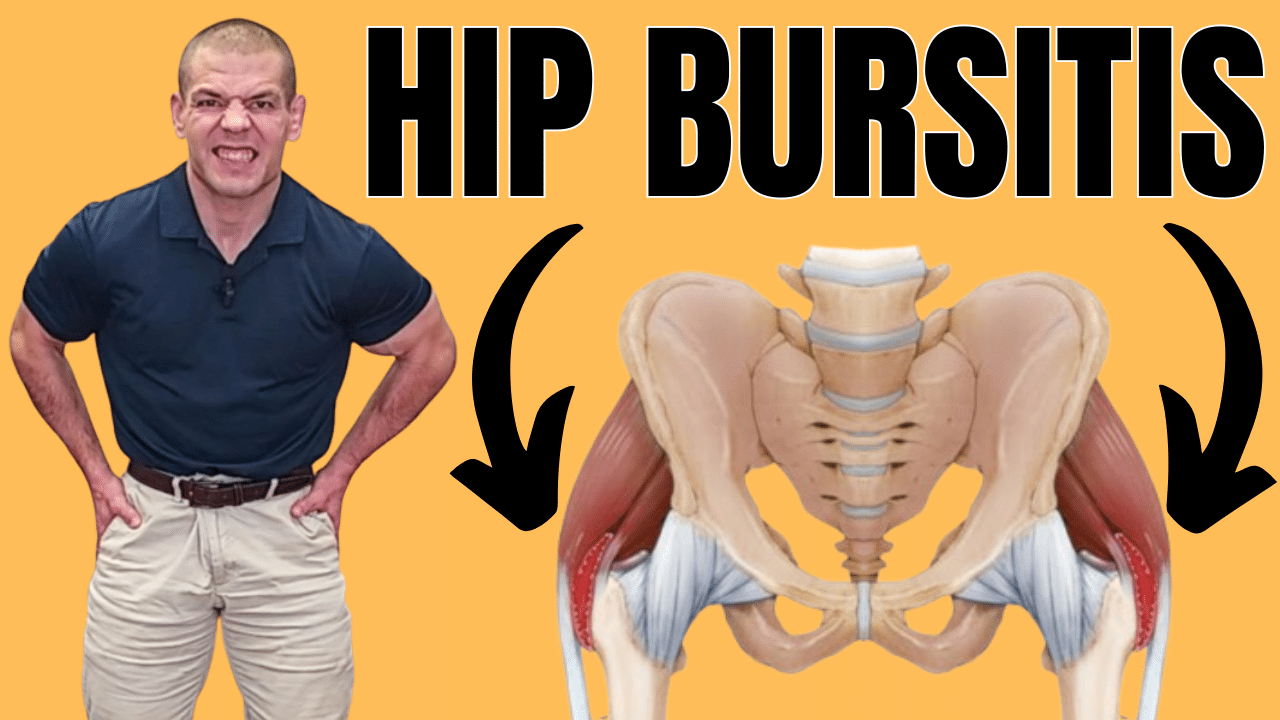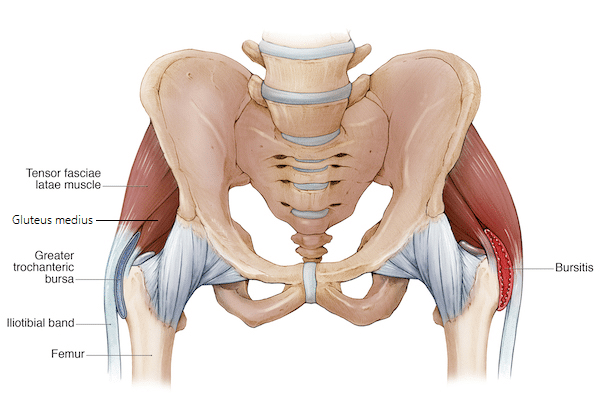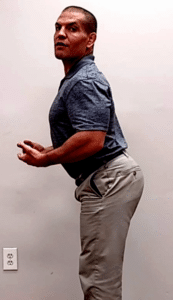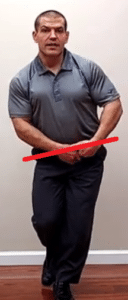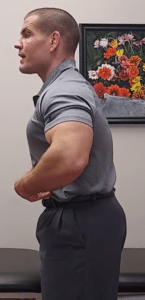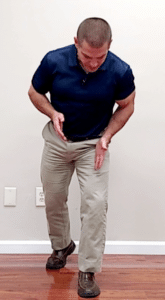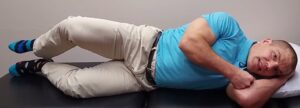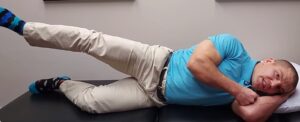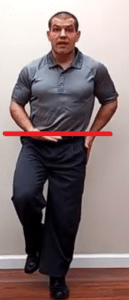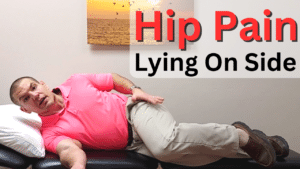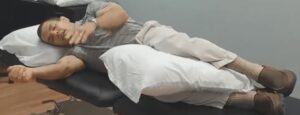Do You Suffer From Bursitis In Both Hips?
Dealing with bursitis in one hip is bad enough, but if you have it in both hips, it's even worse. Bilateral trochanteric bursitis can be both physically and mentally taxing, particularly when it keeps you from sleeping comfortably at night.
Watch this video to learn what causes bilateral trochanteric bursitis plus exercises to relieve bursitis in your hips.
Table of Contents
- What Causes Bilateral Trochanteric Bursitis?
- Central Cause For Bilateral Trochanteric Bursitis
- Posture Exercises For Bursitis In Both Hips
- Strengthening Exercises For Bursitis In Hips
- Sleeping With Bilateral Trochanteric Bursitis
- Other Treatments For Bursitis In Hips
- Need Treatment For Bursitis In Your Hips?
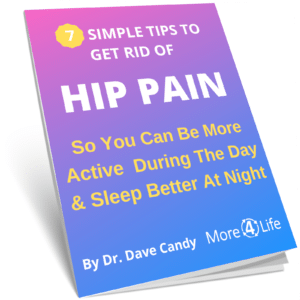
What Causes Bilateral Trochanteric Bursitis?
Your trochanteric bursae are fluid-filled sacs over the outside of each hip bone.
Bursitis happens when the bursa gets inflamed.
However, whenever I hear of people complaining of symmetrical pains where it's the same on both sides of the body, whether that's hip bursitis or plantar fasciitis, it always makes me think of a central problem.
It would be very coincidental to buristis in both hips start at the same time.
It can happen.
However, it's much more likely that there's a central cause that's triggering both of them.
In the case of bursitis, that's often a lower back problem, particularly the L4-L5 and S1 nerves, which make up the superior gluteal nerve that innervates the gluteus medius and gluteus minimus muscles.
These muscles run over the outside of the hip.
Often, hip bursitis pain is not truly the bursa that's inflamed.
Rather, it's an irritation of the tendons that run over the outside of the hip and the bursa.
But regardless of the cause, if the gluteus medius and gluteus minimus muscles are weak, they they can rub over the outside of the hip when you're walking.
That in turn can cause hip bursitis or gluteal tendon pain.
Central Cause For Bilateral Trochanteric Bursitis
It's a good idea to do strengthening exercises for the gluteus medius and the gluteus minimus muscles if you have hip bursitis.
We'll go through those in a bit.
However, all the strengthening exercises in the world won't make a difference if the signal isn't getting from your brain down to your hip muscles to tell them to turn on.
If your nerve roots are getting pinched in the lower back, that can prevent the signal from getting to your hips.
Posture Exercises For Bursitis In Both Hips
When you're standing, make sure not to stand with too much arch in your lower back.
Standing this way can put extra pressure on the nerve roots in the lower back. That in turn can make the gluteal muscles weaker.
Therefore, every time you take a step and put your weight on one leg, your pelvis drops.
This rubs the gluteal tendons over the outside of your hip.
Conversely, standing and walking with your spine in a neutral position helps take pressure off the nerves in your lower back.
That helps get the signal gets from your brain down to your hip muscles to tell them to turn on when you're walking.
Squeezing Glutes When Walking
Additionally, it's important to conscientiously think about turning on your gluteal muscles on when take a step.
Every time you put your foot down on the floor, squeeze the buttock muscles on that side.
Next, load your weight out over that foot, and take a step.
Then squeeze the glutes on the opposite side, load your weight out over the opposite leg, and take a step again.
Repeat that process over and over whenever you walk.
That's not easy to do at first.
It will really take a conscientious effort for probably a few months until it becomes your new habit.
But once you from that new habit, it will probably substantially reduce your hip bursitis pain.
Strengthening Exercises For Bursitis In Hips
Next, I'll cover strengthening exercises for hip bursitis.
The key muscles to strengthen are the gluteus medius and the gluteus minimus muscles.
Some of the common hip bursitis exercises that people do in physical therapy are exercises like clamshells or side lying leg raises.
These are okay exercises, but often people do them wrong.
However, lying down exercises aren't the way that your hips function in real life.
Single-leg standing exercises are a better option for bursitis in your hips.
Stand on one leg keeping your pelvis level. Try to maintain your balance for 10 seconds or longer if possible.
Once you can do that, you can start to progress into a mini-squat exercise. Maintain your balance over one leg, and then slightly squat up and down.
This helps keep your pelvis stable over your leg as you're walking and going up and down stairs. That in turn keeps your gluteal tendons and bursa from rubbing over the outside of your hip.
Sleeping With Bilateral Trochanteric Bursitis
People who have bilateral trochanteric bursitis often have trouble sleeping because they get hip pain regardless of which side they lie on.
If you have bursitis in both hips, sleeping with a pillow between your knees and a folded towel under your waist can help you sleep more comfortably.
The towel under your waist keeps your spine in a neutral position and helps distribute pressure away from your bottom hip.
The pillow between your knees helps keep the gluteal tendons of the top leg from stretching across your hip bone when you sleep at night.
If you toss and turn at night, which many people with bilateral trochanteric bursitis do, using a knee pillow with a strap like the one shown below can help keep the pillow from getting away from you at night.
Vertdens Leg Pillow, Additional Give Awa...
6% OffOther Treatments For Bursitis In Hips
Cortisone injections are another common treatment for hip bursitis pain. While they are often fairly effective, repeated cortisone injections can weaken tendons and bones along with increase your blood sugar.
An alternative treatment that we use in physical therapy called dry needling.
During this treatment, an acupuncture needle is inserted into trigger points in the gluteus medius and/or gluteus minimus muscles.
The mechanical stimulation of the helps relax trigger points or knots without medication.
In some cases, this treatment can give nearly immediate relief from hip bursitis symptoms.
However, it's still a good idea to do hip strengthening exercises in order to prevent the trigger points from coming back in the future.
Need Treatment For Bursitis In Your Hips?
If you live in the St. Louis area and need help for hip bursitis pain, we'd be happy to help.
We'll help you figure out what's causing your hip pain, plus what exercises and other treatments can help resolve it as quickly as possible so that you can get back to being active again.
Just tap the button below to request an appointment with one of our specialists.

